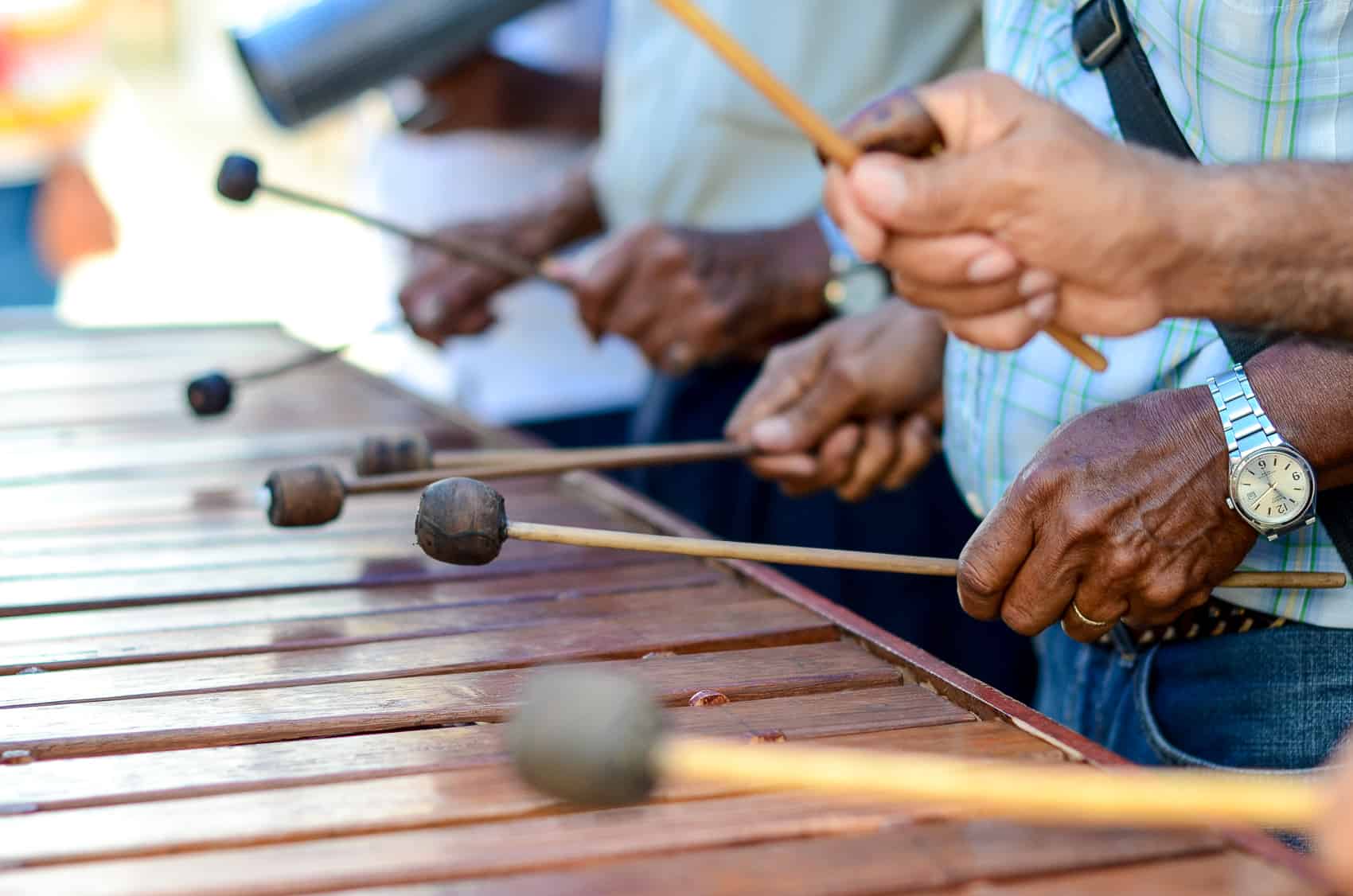GUANACASTE is perhaps the one of the largest gems in Costa Rica’s cultural crown, with historic battles, huge handmade tortillas, cowboys, marimbas (large wooden xylophones) and the classic “weeepeepia” call announcing the joy of its people at each of their many fiestas.
Guanacastecos proudly show off their traditions, which include a fervent faith in their saints, at the fiestas patronales (municipal festivities) or fiestas populares and, of course, at the biggest fiesta, the Annexation of Guanacaste to Costa Rica, July 25, celebrated in Liberia and Santa Cruz.
In the fiestas patronales, the Guanacastecos give special attention to church masses and processions for the saint of the district. They also highlight cattle exhibits, horse parades and their famous bull fights, where cowboys demonstrate their abilities by holding themselves with a bredal ( rope) tied around a bucking bull.
The main fiestas in Nicoya are on Dec. 12, when they honor The Lady of Guadalupe. They present the traditional Danza de la Yeguita (The Little Mare Dance), when people dance with the icon of the Virgin in a procession. Nicoyanos also celebrate Saint Blass during the last week of January and the first of February.
PEOPLE can visit Abangares during the week of April 23, when citizens celebrate their patron saint San Jorge. According to Andri Martínez, at the Municipality of Abangares, on April 23, people from approximately 15 towns in the district hold a procession for their namesake saints, lead by the archbishop and Saint George. They also celebrate San Buena Aventura mid-April, but with less festivity. The fiestas populares are in late March.
La Cruz is already preparing its fiesta, opening April 24 and closing May 3, the Day of the Holy Cross.
“We’ll have bull fights, folkloric dances, folklore music, stories, marimbas and a special concert by Nicaraguan Trova singer Carlos Mejía Godoy,” says Renán Cepeda, president of the Fiestas Commission. Another attraction is the Cabalgata (horse tour), which goes to the beach, up to the hills and returns to town. A mariachi and some bands from Nicaragua will join the fiesta. According to Cepeda, the commission will donate some of the revenue for scholarships.
Bagaces has its La Feria del Rodeo (Cowboy Fiesta and Cattle Auction) in May. On June 5, the citizens celebrate San Caralampio. According to Tina Alvarado at the municipality, the saint is miraculous. Alvarado explains that cholera took a lot of lives many years ago, until people prayed to the saint for help.
Since the last person died on June 5, they decided to dedicate the day to the saint. The fiesta includes, processions, a turno or small fair, an auction and carreras de cintas – horse riders have to take a ribbon off a ring with a small stick as fast as they can.
Santa Cruz celebrates its patron saint Santo Cristo de Esquipulas mid-January. The historical city offers visitors the best of its folkloric dances, marimbas and, of course, bull fights. Residents prepare their famous chicha (liquor made of corn), cajetas (traditional candy) and huge homemade tortillas.
IN perhaps the most unusual celebration, on Holy Saturday, residents of Ortega de Santa Cruz hold what they call LaLagarteada. According to Jessica López, journalist of local TV Channel 36, the idea is to find an alligator and take it to the soccer field. The next day, the towns people free the reptile – the process is monitored by a member of the Ministry of Natural Resources, Energy and Mines (MINAE) to ensure the animal is not hurt.
“The tradition attracts many people –even National Geographic came once to do a documentary,” says López. “Before, people killed the alligator to use its grease for medicine.”
In Santa Barbara, people hold the Maya New Year, including ceremonies with Maya priests, and special food cooked in solar ovens, in February 24-25 at Casa del Sol.
LIBERIA has its big fair the first two weeks of March. Costa Ricans from around the country usually attend this fair and also the Cattle Fair around July 25 to celebrate Annexation. It usually features concerts, bullfights, sports, cultural events, rides, cattle and horse exhibits and cowboy demonstrations.
Hojancha’s Fiestas are mid-March, honoring Saint Joseph and its fiestas populares are the last week of December. Cañas festivities are held in late March. People in Tilarán celebrate Saint Anthony on June 13 and hold their festejos populares in April, including cattle, fish and bird exhibits.
Some festival dates vary according to the weather and when Easter falls.






